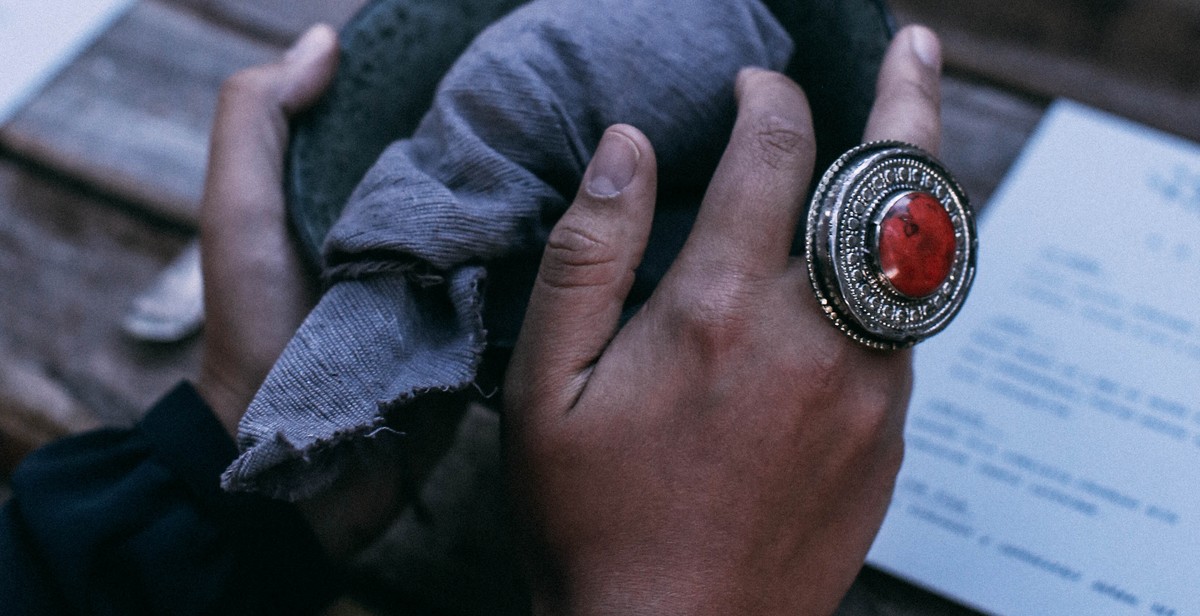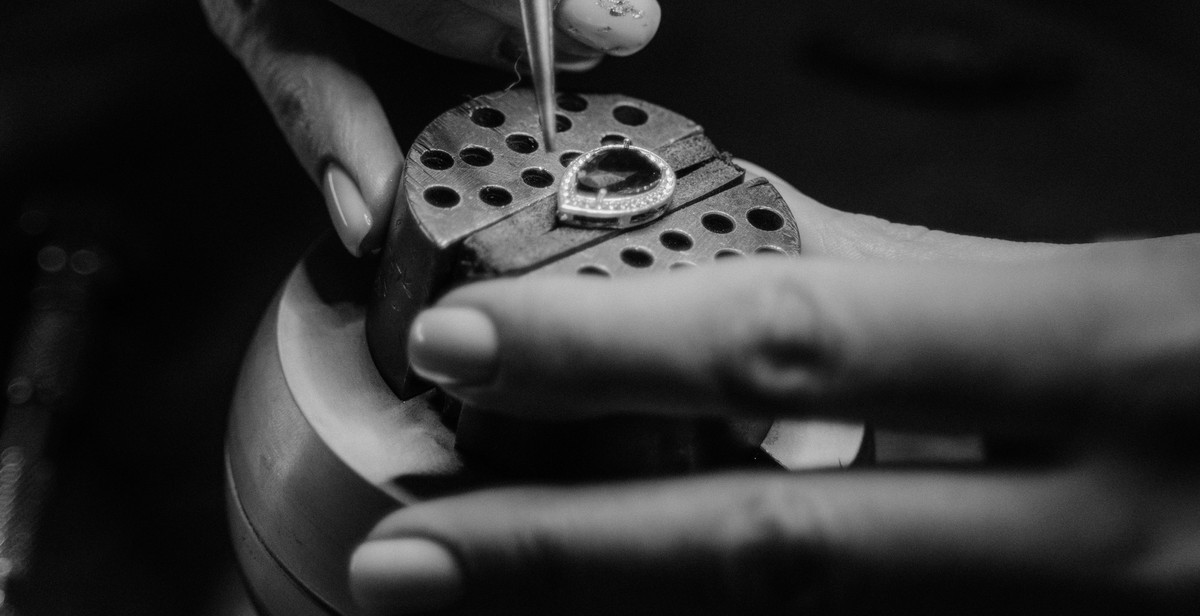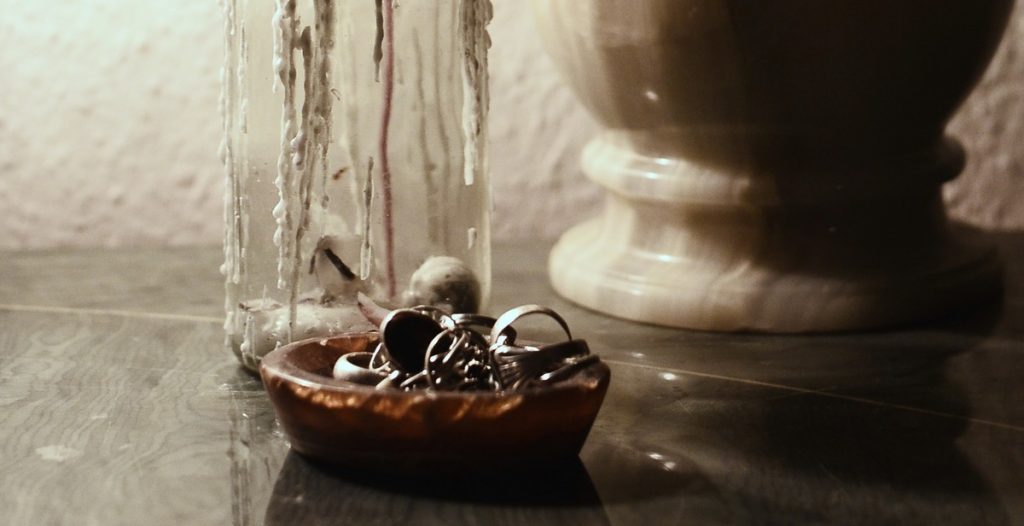Introduction: What is the difference between a ‘bezel’ and a ‘gypsy’ setting?
When it comes to jewelry, there are many terms that are used to describe different styles and techniques. Two of these terms are ‘bezel’ and ‘gypsy’ settings. While they may sound similar, they actually refer to two distinct types of settings that are used to hold gemstones in place.
Defining Bezel and Gypsy Settings
A bezel setting is a type of setting that uses a thin metal band to hold the gemstone in place. The metal is shaped around the stone to create a secure setting that protects the edges of the gem. This type of setting is often used for smaller stones or for stones that have a lower profile.
A gypsy setting, on the other hand, is a type of setting that is flush with the surface of the jewelry. The gemstone is set into a hole that is drilled into the metal, and the metal is then pushed over the edges of the stone to hold it in place. This type of setting is often used for larger stones or for stones that are more valuable.
Now that we have defined the two types of settings, it is important to understand the differences between them. In the following sections, we will explore the pros and cons of each type of setting, as well as the situations in which they are most commonly used.

What is a Bezel Setting?
A bezel setting is a type of jewelry setting that holds a gemstone securely in place by surrounding it with a metal rim. The rim can be thin or thick, and it can be made of various metals such as gold, silver, platinum, or palladium. Bezel settings are commonly used for rings, earrings, pendants, and bracelets, and they can be designed in various shapes and sizes to match the gemstone and the jewelry style.
Types of Bezel Settings
There are several types of bezel settings, each with its own characteristics and advantages:
Full Bezel Setting
A full bezel setting completely surrounds the gemstone with a metal rim, leaving only the top surface visible. This type of setting provides maximum protection and security for the gemstone, as well as a sleek and modern look.
Partial Bezel Setting
A partial bezel setting holds the gemstone in place with a metal rim that covers only part of the stone, leaving some of the sides or corners exposed. This type of setting can enhance the beauty of the gemstone by showcasing its unique shape and cut, while still providing some protection and stability.
Flush Bezel Setting
A flush bezel setting is a type of partial bezel setting where the metal rim is level with the surface of the gemstone. This type of setting creates a smooth and seamless look, and it can be used for gemstones of various shapes and sizes.
Scalloped Bezel Setting
A scalloped bezel setting has a metal rim with curved edges that follow the shape of the gemstone. This type of setting can add an elegant and feminine touch to the jewelry, and it can be used for both round and fancy-shaped gemstones.
Pros and Cons of Bezel Settings
Bezel settings have several advantages and disadvantages that should be considered when choosing a jewelry design:
Pros
- Secure and stable: Bezel settings hold the gemstone firmly in place, reducing the risk of it falling out or getting damaged.
- Protective: Bezel settings cover the edges of the gemstone, protecting it from chipping, scratching, and other types of wear and tear.
- Customizable: Bezel settings can be designed in various shapes, sizes, and metals, allowing for a personalized and unique look.
- Makes gemstones appear larger: Bezel settings can make the gemstone appear larger than it actually is, as the metal rim adds some visual weight and depth.
Cons
- Less light exposure: Bezel settings cover more of the gemstone than other types of settings, reducing the amount of light that can enter and reflect from the stone.
- Less sparkle: Bezel settings can make the gemstone appear less sparkly and brilliant, as the metal rim can create shadows and reflections that obscure the stone’s brilliance.
- Less versatile: Bezel settings may not be suitable for all types of gemstones and jewelry designs, as they can add weight and bulk to the piece, and may not allow for certain styles and settings.

What is a Gypsy Setting?
A Gypsy setting is a type of jewelry setting that is commonly used for rings, but can also be used for earrings and pendants. Also known as a flush setting, it is a way of securing a gemstone into a piece of jewelry by placing it into a hole that has been drilled into the metal. The gemstone is then secured by pushing the metal around the edges of the stone, creating a smooth, flush surface. This type of setting is great for those who want a secure and low-profile setting that won’t snag on clothing or other objects.
Types of Gypsy Settings
There are two main types of Gypsy settings: full and partial. A full Gypsy setting is when the entire gemstone is set into the metal, creating a completely flush surface. A partial Gypsy setting, also known as a semi-Gypsy setting, is when the gemstone is only partially set into the metal, leaving some of the stone visible above the surface of the metal. Partial Gypsy settings are often used for larger gemstones that would be difficult to set fully flush with the metal.
Pros of Gypsy Settings
- Secure: Because the gemstone is set into a drilled hole and then secured by pushing the metal around the edges of the stone, Gypsy settings are extremely secure and are less likely to snag on clothing or other objects.
- Low-profile: The flush surface of a Gypsy setting means that the gemstone sits close to the surface of the metal, creating a low-profile look that is great for those who want a subtle and understated piece of jewelry.
- Durable: Because the gemstone is set into the metal, Gypsy settings are extremely durable and are less likely to become loose or fall out than other types of settings.
- Easy to clean: The flush surface of a Gypsy setting makes it easy to clean, as there are no prongs or other structures that can trap dirt or debris.
Cons of Gypsy Settings
- Difficult to adjust: Because the gemstone is set into a drilled hole, Gypsy settings are difficult to adjust if the size of the gemstone needs to be changed.
- Not ideal for delicate gemstones: Gypsy settings are not ideal for delicate gemstones, as the pressure used to secure the stone into the metal can cause damage or cracking.
- Not as versatile: Gypsy settings are not as versatile as other types of settings, as they are primarily used for rings and are not suitable for all types of gemstones or jewelry designs.
Overall, Gypsy settings are a great option for those who want a secure, low-profile, and durable setting for their gemstones. However, they may not be suitable for all types of gemstones or jewelry designs, and may be difficult to adjust if the size of the gemstone needs to be changed. It’s important to consider the pros and cons of Gypsy settings before choosing this type of setting for your jewelry piece.

Comparing Bezel and Gypsy Settings
When it comes to choosing a setting for your jewelry, two popular options are the bezel and gypsy settings. Both settings offer unique features and benefits, so it’s important to understand the differences to make an informed decision.
Appearance
- A bezel setting encases the stone in a metal rim, which can be customized to fit the shape of the stone. This creates a sleek and modern look that highlights the stone’s shape and color.
- A gypsy setting, also known as a flush setting, places the stone within a metal hole that is drilled into the jewelry. This creates a more subtle and traditional look that emphasizes the metalwork around the stone.
Durability
- A bezel setting provides excellent protection for the stone because it covers the entire edge. This makes it less likely for the stone to become loose or damaged.
- A gypsy setting also offers good protection for the stone, but it is more vulnerable to chips or scratches because it sits flush with the metal.
Maintenance
- A bezel setting requires less maintenance because there are no prongs to catch on clothing or other objects. However, dirt and debris can become trapped in the small crevices between the metal and stone.
- A gypsy setting is easy to clean because there are no prongs or crevices to worry about. However, it can be difficult to replace the stone if it becomes damaged.
Price
- A bezel setting is typically more expensive than a gypsy setting because it requires more metalwork and customization. However, it offers a more secure and modern look.
- A gypsy setting is generally less expensive than a bezel setting because it requires less metalwork. However, it offers a more traditional and subtle look.

